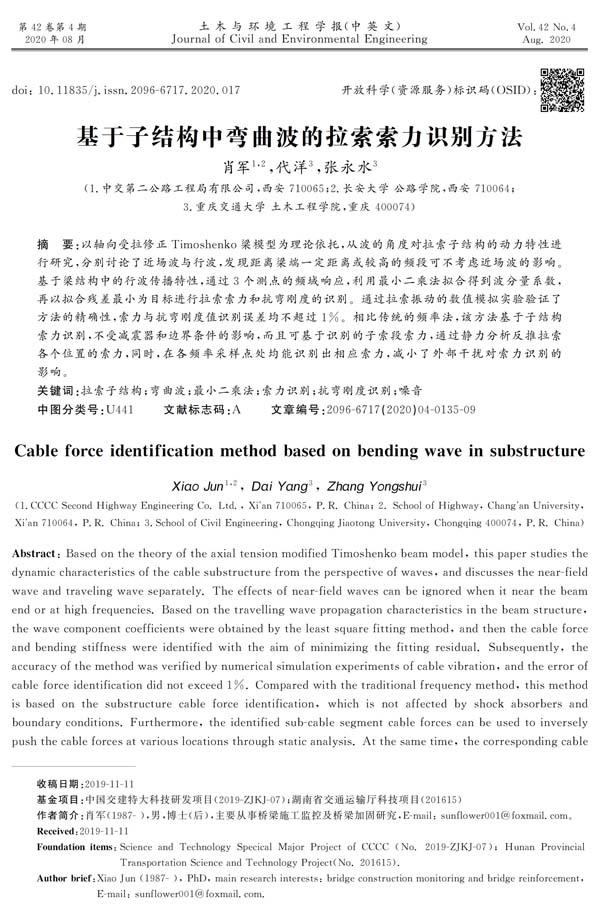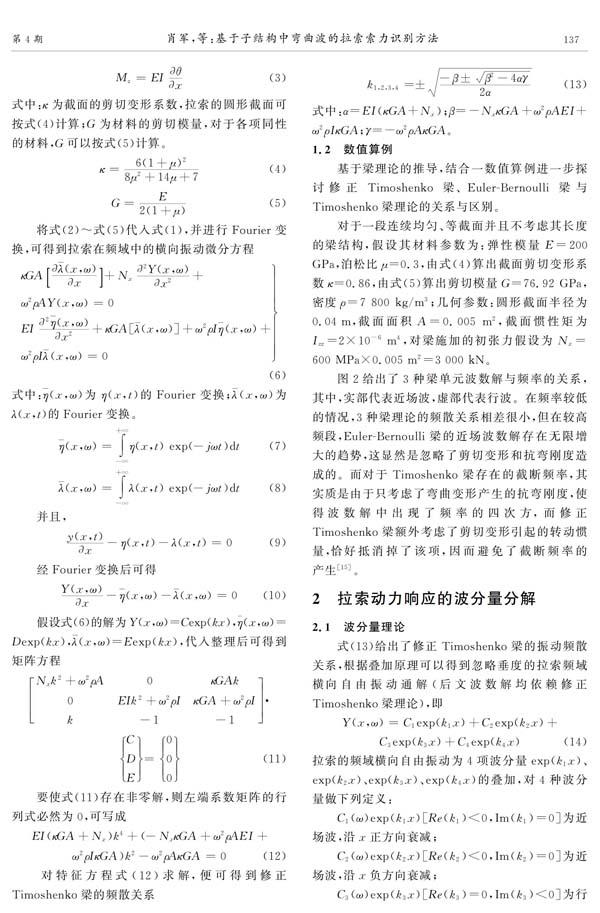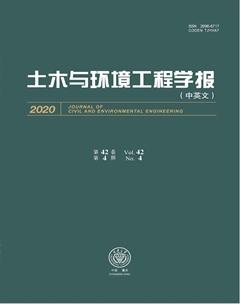基于子结构中弯曲波的拉索索力识别方法
肖军 代洋 张永水



摘要:以軸向受拉修正Timoshenko梁模型为理论依托,从波的角度对拉索子结构的动力特性进行研究,分别讨论了近场波与行波,发现距离梁端一定距离或较高的频段可不考虑近场波的影响。基于梁结构中的行波传播特性,通过3个测点的频域响应,利用最小二乘法拟合得到波分量系数,再以拟合残差最小为目标进行拉索索力和抗弯刚度的识别。通过拉索振动的数值模拟实验验证了方法的精确性,索力与抗弯刚度值识别误差均不超过1%。相比传统的频率法,该方法基于子结构索力识别,不受减震器和边界条件的影响,而且可基于识别的子索段索力,通过静力分析反推拉索各个位置的索力,同时,在各频率采样点处均能识别出相应索力,减小了外部干扰对索力识别的影响。
关键词:拉索子结构;弯曲波;最小二乘法;索力识别;抗弯刚度识别;噪音
中图分类号:U441 文献标志码:A 文章编号:20966717(2020)04013509
收稿日期:20191111
基金项目:中国交建特大科技研发项目(2019ZJKJ07);湖南省交通运输厅科技项目(201615)
作者简介:肖军(1987 ),男,博士(后),主要从事桥梁施工监控及桥梁加固研究,Email: sunflower001@foxmail.com。
Received:20191111
Foundation items:Science and Technology Specical Major Project of CCCC (No. 2019ZJKJ07); Hunan Provincial Transportation Science and Technology Project(No. 201615).
Author brief:Xiao Jun (1987 ), PhD, main research interests: bridge construction monitoring and bridge reinforcement, Email: sunflower001@foxmail.com.
Cable force identification method based on bending wave in substructure
Xiao Jun1,2, Dai Yang3, Zhang Yongshui3
(1.CCCC Second Highway Engineering Co. Ltd., Xian 710065, P.R. China; 2. School of Highway, Changan University, Xian 710064, P.R. China; 3.School of Civil Engineering, Chongqing Jiaotong University, Chongqing 400074, P.R. China)
Abstract: Based on the theory of the axial tension modified Timoshenko beam model, this paper studies the dynamic characteristics of the cable substructure from the perspective of waves, and discusses the nearfield wave and traveling wave separately. The effects of nearfield waves can be ignored when it near the beam end or at high frequencies. Based on the travelling wave propagation characteristics in the beam structure, the wave component coefficients were obtained by the least square fitting method, and then the cable force and bending stiffness were identified with the aim of minimizing the fitting residual. Subsequently, the accuracy of the method was verified by numerical simulation experiments of cable vibration, and the error of cable force identification did not exceed 1%. Compared with the traditional frequency method, this method is based on the substructure cable force identification, which is not affected by shock absorbers and boundary conditions. Furthermore, the identified subcable segment cable forces can be used to inversely push the cable forces at various locations through static analysis. At the same time, the corresponding cable force can be identified at each frequency sampling point, reducing the impact of external interference on cable force identification.
Keywords:cable substructure; bending wave; least square method; cable force estimation; bending stiffness identification; noise

